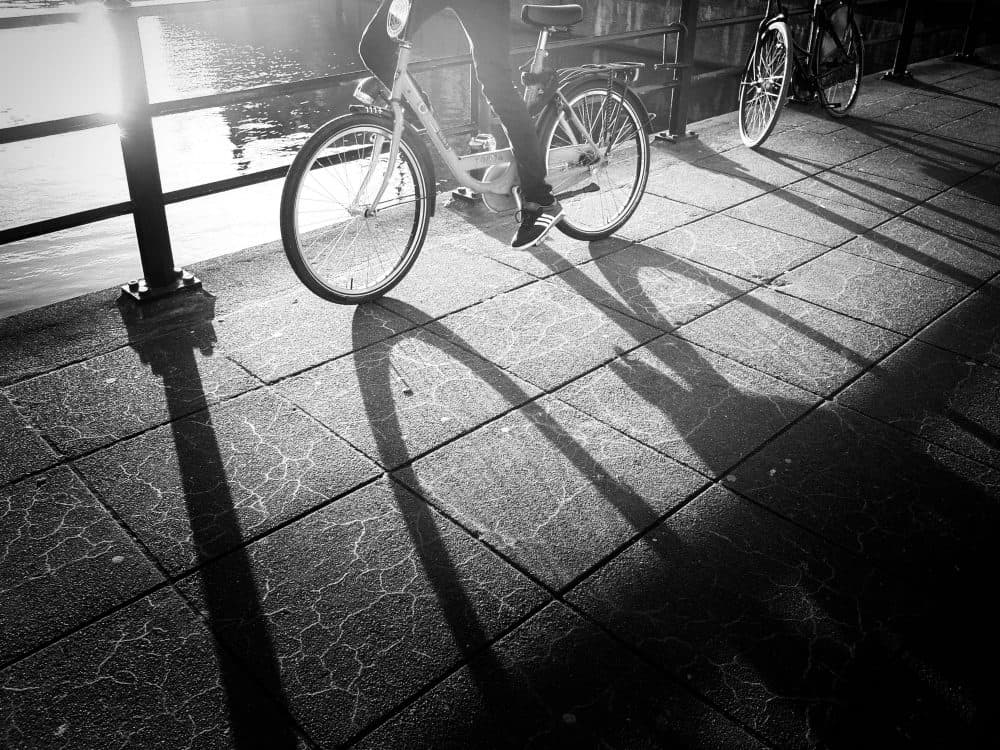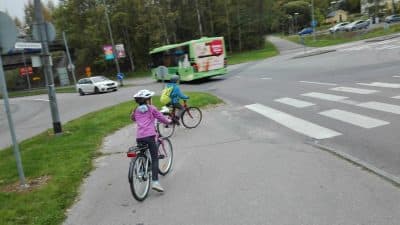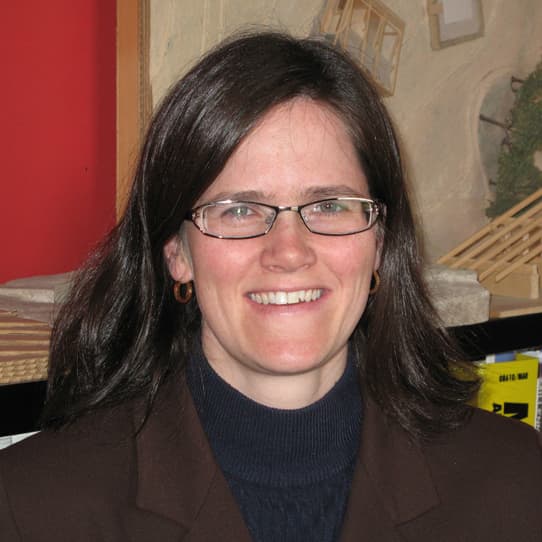Advertisement
Letter From Finland: Finding Wings On Two Wheels In Jyväskylä

It felt good to be inside a warm car last weekend. We had rented a German four-door hatchback Opel to visit family in rural Finland. We have been living for seven weeks in the university city of Jyväskylä, Finland. We have not missed having a car, and for now we have chosen not to buy one. We bike, walk or bus around the city.
So far, I have been struck by the difference biking makes. As an architect focused on sustainable design, I already knew about reduced air and noise pollution in cities, and health benefits and cost savings for riders.
For me, the hidden gem in getting around by bike has been the autonomy that cycling affords tweens and teens.
For the past five years, I have missed morning routines...heading to work in Somerville via, as my friend so aptly put it, my parking spot on I-93 South.
In Andover, Massachusetts, where I lived the last decade, I got into a car and shuttled my 8- and 10-year-olds to and from soccer, friends’ houses and music lessons. For the past five years, I have missed morning routines, waking before the family and heading to work in Somerville via, as my friend so aptly put it, my parking spot on I-93 South. Here, in Jyväskylä, I have been riding with the kids to school each morning.
The children here in Finland, equipped with their mobile phones, walk or ride to school on their own. Once my 8-year-old daughter learned the route home, she made it clear that she would be riding home on her own each day.
I may soon have to give up these cherished rides. This letting go is made easier knowing that their transit, though solo, is through safe communities on paths established for cyclists and pedestrians. This infrastructure is making it easier for me to give my children wings.
The parking lot at the local high school is simply a 100-foot-long canopy over bike racks and space for mopeds. Reduced parking space for cars means less water runoff, higher density building, more space for fields, more walkable neighborhoods.

There are plenty of bicycles in the U.S. — 17.4 million sold in 2015. The U.S. bike market is roughly equivalent in value to the European market, each of which pulls in approximately $6 billion annually. However, even though we in the States use bikes mainly for recreation, we have the potential to make biking a regular part of our transportation mix.
Certainly, there are Massachusetts towns that are more bikable, and several have been recognized as such with the American League of Cyclists award: Gold for Cambridge, Silver for Somerville and Nantucket, and Bronze for Brookline and several other, notably largely wealthy, communities. Key outcomes of these commendations are to decrease crashes and fatalities and increase ridership. Work still needs to be done, even in those towns, where cyclists still lose their lives.
The U.S. Federal Highway Administration has written a global benchmarking study on urban planning practices that prioritize biking in urban environments. Finland is included in the study, and, in my experience, deservedly so. Infrastructure has been established so that children, the elderly and the wheelchair-bound move safely about town.
The Finnish Cycling League recognized the Jyväskylä region as Finland's cycling municipality of 2016 for its excellence in existing and planned biking infrastructure. Nationwide, 8 percent of all trips (bike, bus, walking, car) were by bicycle; here in Jyväskylä, 13 percent of all trips were by bike.
In Jyväskylä, as in most of Finland, many major intersections are organized so bikes and pedestrians either have tunnels under the road or a bridge over it. These infrastructural strategies improve both the driving and cycling experience so that, at high speeds, the twain do not meet. The cyclist route is often accompanied by a grove of trees, or a large moss-covered rock, keeping nature in the built environment.
Safe routes for pedestrians and cyclists are good for society, the economy and drivers. It is also good for business, as it increases both foot traffic at retail establishments and the age range of those who can frequent and work at businesses.
Once my 8-year-old daughter learned the route home, she made it clear that she would be riding home on her own each day.
Which brings us back to teenagers, who spend lots of time waiting to get to practice or work because their ride is stuck on the Pike or 93. With safe routes, better enforced traffic laws, and improved driving habits, cycling becomes a real option for teens to move about independently.
What do Lawrence, Lowell and Mattapan need to do to make their roads easy and safe to bike? Roxbury and Andover? Your town? I know it is sometimes so much easier to hop in the car to do an errand. What would need to change to make it easy to bike to the library, bank or grocery store? What could that do for your (and your teenager’s) quality of life?
As I write, I just biked home from the grocery store. It was a bit chilly, at 48 degrees, but my haul fit into my backpack, and for now, I don’t need the Opel. But talk to me in January.
